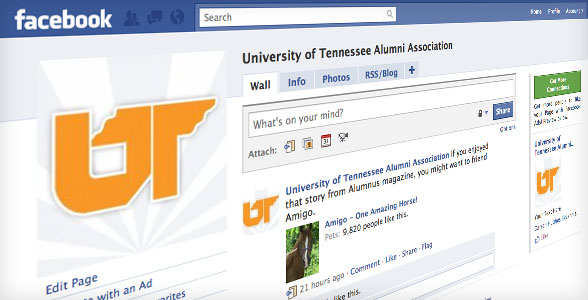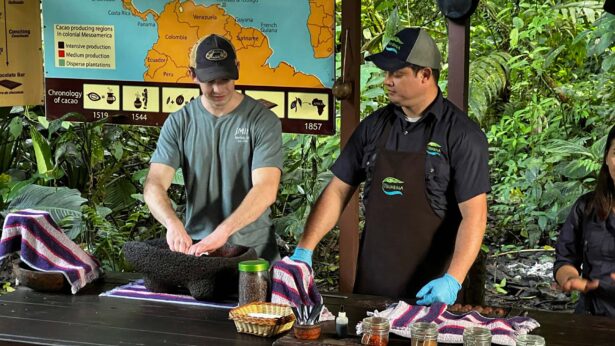“Anyone watching basketball?”
In the year and a half since the UT Alumni Association launched its official Facebook page, those three words have elicited more comments than any other link or status update. It was posted last January 10 at 6:51 p.m., midway through the Volunteers’ home game against the top-ranked Kansas Jayhawks. By the time the Vols’ victory was secured, 39 alumni had left comments and 81 others had “liked” the update.
For an hour or two that night, the UTAA Facebook page blossomed unexpectedly into a spontaneous virtual event, during which alumni watching the game on TVs throughout the country chatted with alumni sitting courtside, commenting on their smart phones. Darren Hughes, UTAA communications manager, says that experience epitomizes the allure of social networks.
“I may have been the person who asked if anyone was watching the game, but at that point I handed over the reins,” says Hughes. “Where the discussion went from there was up to the alumni.”
It’s no secret that the UT alumni population is growing at a faster rate than ever before and that UT’s allocation of state funding is shrinking steadily, which means the Alumni Association is asked each year to do a little more with a little less.
“We’ve approached this challenge partly as a communications issue,” Hughes says. “Printing and mailing magazines, newsletters, and event announcements is really expensive; sending e-mails and managing social networks is relatively cheap. In some cases, it’s free.”
The UTAA and the four campus offices of alumni affairs sent more than 6 million e-mails in 2009. “We Facebook’d, Tweeted, Flickr’d, blogged, and Linked In,” Hughes says. “Honestly, the job has made me a bit schizophrenic, as I’m constantly shifting gears, moving from one medium to another.”
But for Hughes, it’s worth the effort, because each tool allows the UTAA to make new connections between alumni in the manner they choose. Not interested in Twitter? No problem. But those who are now have one more way of keeping in touch with their university and their alumni association.
As part of the UTAA’s recent yearlong strategic planning process, nearly 11,000 UT alumni participated in a comprehensive attitudes survey. Respondents identified e-mail, websites, and electronic newsletters as three of the four most important methods of communications (out of 11 options). Also among the top four were alumni magazines.
“Contrary to our expectations, this opinion was held consistently across age brackets,” Hughes says. “We’ve used those findings as an incentive to rethink and evolve the magazine you’re holding—or the website you’re reading, as the case may be.”
Visit the UTAA online:



